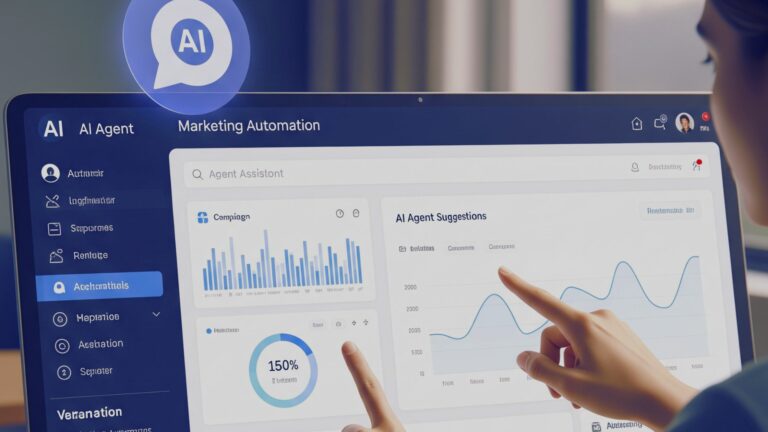It is common to see an architecture diagram for a marketing cloud project that includes a marketing cloud, a sales cloud (or other cloud), a data warehouse, reporting tools, and email tools. However, there are additional reasons for us to initiate the synchronisation of our customer information across multiple platforms.
Most decisions should be based on the system that distributes the master data, which is the source of truth. In the case of Sales Cloud, it would be the Marketing Cloud Connector who would make the pitch.
In this article, we’ll discuss the concept of “Marketing Cloud Connector,” a step-by-step installation guide, and its various types, advantages, and mechanisms.
Marketing Cloud Connector
A marketing cloud connector is a software component or integration tool that enables seamless data transfer and synchronisation between different marketing platforms. It acts as a bridge between disparate systems, allowing marketers to connect, integrate, and automate their marketing efforts.
Marketing Cloud Connector – Here’s a rundown of how they typically work
Integration setup
The initial procedure involves setting up the integration linking the marketing cloud services you wish to connect. Usually, this involves setting up the connector and providing the necessary authentication credentials or API keys.
Data mapping
Once the integration is established, the connector allows you to map the data fields between the connected platforms. This ensures that data is properly synchronised and aligned across systems. For example, you can map contact information, purchase history, or campaign data between CRM and email marketing platforms.
Data transfer and synchronisation
With the integration and data mapping in place, the Marketing Cloud Connector enables the transfer and synchronisation of data between the connected platforms. Depending on the connector’s capabilities and configuration, it can transfer data in real time or at predefined intervals.
Workflow automation
Marketing cloud connectors frequently include workflow automation functionality. This means they can initiate actions or workflows based on specific conditions or events. For example, when a fresh lead is created in a CRM platform, the connector can automatically add that lead to an email marketing list or launch a personalised email campaign.
Bi-Directional data Flow
Marketing Clcloudonnectors support bi-directional data flow, which means that data can be transferred back and forth between connected platforms. This allows changes made on one platform to be reflected in others, ensuring data consistency and accuracy across systems.
Real-time monitoring and reporting
Many marketing cloud connectors include monitoring and reporting features that allow you to track data flow, monitor synchronisation status, and analyse performance metrics. This allows you to ensure that the data is being transferred correctly and to identify any potential problems or bottlenecks.
Continuous Improvement and Optimisation
As you use the Marketing Cloud Connector, you can gain insights from the integrated data and use them to optimise your marketing efforts. By analysing the performance and effectiveness of campaigns across platforms, you can make data-driven decisions, fine-tune targeting strategies, and improve overall marketing outcomes.
How to install marketing cloud connector
Prerequisites
- Salesforce Marketing Cloud Login with the following roles:
- Administrator
- Marketing Cloud Administrator
- API User
- Salesforce Service/Sales Cloud System Administrator Login
- Confirm what type of service or sales cloud connection is provided, i.e., Sandbox or Production
Installing Marketing Cloud Connector package
Log into your Salesforce CRM instance, i.e., Sales Cloud or Service Cloud.
- Production Org: https://sfdc.co/MCC
- Sandbox Org: https://sfdc.co/MCCSandbox

It is recommended to “Install for Admins Only.” We can choose other users or profiles, but installing for admins only decreases the security risks.
Approve access to third-party websites.

We are installing and granting admin access only.

The installation process will require a few minutes to be finished.

The installed packages should be available in the installed packages. Package name: Marketing Cloud

After installation, we need to make the necessary updates to the Salesforce admin user to enable access to the package.
Add two marketing cloud fields to the page layout on the User Page Layout Setup 🡪 Object Manager 🡪 User 🡪 User Page Layouts.

Check for Marketing Cloud and verify the remote site.

Salesforce Marketing Cloud Connector setup
Next, we will have two options on how to configure the Salesforce Marketing Cloud Connector. The automatic setup will help with IP address-allowing listings, workflows, and permission sets.

Click through the wizard Automatic Setup 🡪 Pre-Install: Default Workflow User 🡪 Pre-Install: Session Settings (MC account session timing should be as long as possible) 🡪 Pre-Install: Field-Level Security 🡪Pre-Install: Update Page Layouts and Done.
Click the checkbox and configure Marketing Cloud Connector to start the configuration updates.

Check the configuration summary.

Finally, make the handshake between the sales cloud and the marketing cloud.

Make the necessary changes to settings and configurations.

Go to the Admin section in Salesforce Marketing Cloud and look for Salesforce Integration.

Now the org is connected.

Sync the data from Sales Cloud to Marketing Cloud
Go to Audience Builder 🡪 Contact Builder 🡪 Data Source, and 🡪 Synchronised in the Marketing Cloud.

Click on Synchronised Data Sources 🡪 Setup Object and Select the required entities from the list.

After synchronisation to Marketing Cloud, it will be stored in the Data Extensions à Synchronised Data Extensions.

Types of Marketing Cloud Connectors
Customer Relationship Management (CRM) Connectors
CRM connectors integrate marketing cloud platforms with popular CRM systems like Salesforce and HubSpot. This integration allows seamless data synchronisation, enabling marketers to leverage customer insights for personalised marketing campaigns. With CRM connectors, marketers can automate lead nurturing, track customer interactions, and enhance the customer journey.
Advertising Platform Connectors
Advertising platform connectors connect marketing cloud platforms and powerful advertising platforms such as Google Ads and Facebook Ads. These connectors enable marketers to import advertising campaign data, track conversions, and optimise targeting. By integrating advertising platforms with marketing clouds, marketers can achieve greater campaign efficiency and deliver personalised ads to the right audience.
Email Service Provider (ESP) Connectors
ESP connectors integrate marketing cloud platforms with leading email service providers like Mailchimp and Constant Contact. These connectors streamline email marketing workflows by automating list segmentation, personalisation, and email delivery. Marketers can create targeted email campaigns, track engagement metrics, and drive better results with the power of ESP connectors.
Content Management System (CMS) Connectors
CMS connectors bridge marketing cloud platforms with popular content management systems like WordPress and Drupal. These connectors simplify content creation and distribution processes, allowing marketers to publish and update content across multiple channels seamlessly. By leveraging CMS connectors, marketers can enhance content marketing strategies, improve SEO, and increase website traffic.
Benefits of the Salesforce Marketing Cloud Connector
- Allows sending email messages from the sales, service, or marketing cloud.
- Measures customer engagement and sends email tracking history back to the contact profile.
- Automatically synchronises data from CRM to the marketing cloud.
- Connects Journey Builder with Sales, Service, and Community Cloud.
Conclusion
- A marketing cloud connector is a software component or integration tool enabling seamless data transfer and synchronisation between marketing platforms. It acts as a bridge between disparate systems, allowing marketers to connect, integrate, and automate their marketing efforts.
- Marketing cloud connectors establish a connection between different marketing platforms and enable the seamless exchange of data and functionality.
- Using a marketing cloud connector involves
- Integration setup.
- Data mapping.
- Data transfer and synchronisation
- Workflow automation.
- Bi-directional data flow.
- Real-time monitoring and reporting.
- Continuous improvement and optimisation
- Different types of marketing cloud connectors include CRM connectors, advertising platform connectors, ESP connectors, and CMS connectors.
- Installing a Marketing Cloud Connector involves specific prerequisites and steps, including logging into Salesforce CRM, installing the connector package, making necessary updates to the Salesforce admin user, configuring the connector through automatic setup, and establishing the connection between Sales Cloud and Marketing Cloud.
- The benefits of using a marketing cloud connector include sending email messages from sales, service, or marketing cloud, measuring customer engagement and tracking email history, automatically synchronising data from CRM to the marketing cloud, and connecting Journey Builder with sales, service, and community cloud.










